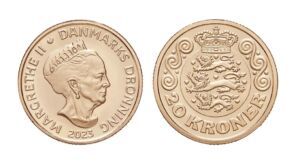News
Excavation hopes to unlock the secrets of Hammershus
This article is more than 11 years old.
Looking for answers at one of Denmark’s most famous ruins
Many people who have never been to Hammershus – a 12th century castle ruin on Bornholm – have at least seen a photograph of what may arguably be the island's most recognisable landmark.
It seems so familiar, and yet remarkably, there exists no documentation of precisely why or when the castle was originally built. Qualified archaeologists had never excavated Hammershus before the one that started today.
A team from the National Museum, Bornholm’s Museum and nature agency Naturstyrelsen including castle researchers from Danmark’s Borgcenter started digging at sites in and around the ruin to finally date the castle and answer other questions about the location.
Theories abound
Throughout history, there have been several suggestions as to when Hammershus was built and who was behind it.
"We know that parts of Hammershus are medieval, but knowing exactly when it was built during that period is important to understanding the role and importance of the castle,” Nils Engberg from the National Museum told Jyllands-Posten.
READ MORE: History you can touch – and feel
One origins story has Hammershus being built during the reign of Valdemar the Great in 1159. Another holds that Archbishop Jacob Erlandson began construction in 1260 to protect Bornholmers from Prince Jaromar of Rügen, who had captured and burned a smaller castle on the island the year before. A later theory suggests that Hammershus was built in the early 1200s as a collaboration between King Valdemar II and Archbishop Anders Sunesen.
Handle with care
The castle was used until sometime in the 1700s and then abandoned, after which it fell into disrepair. Locals hauled off many artefacts, stone and timber. Houses and farms throughout the area are said to have bits of Hammershus in them.
A poorly organised excavation in the 1800s did reveal coins, bottles and other bits of history, but they covered such a large period of the castle's existence, they offer few clues as to the date of its construction. The dig was poorly managed and much was lost, according to historians. The current group aims to do a better job.
“We hope to get down to the very first foundations of Hammershuus and find something that can date the castle,” said Engberg. “All possibilities remain open.”










































